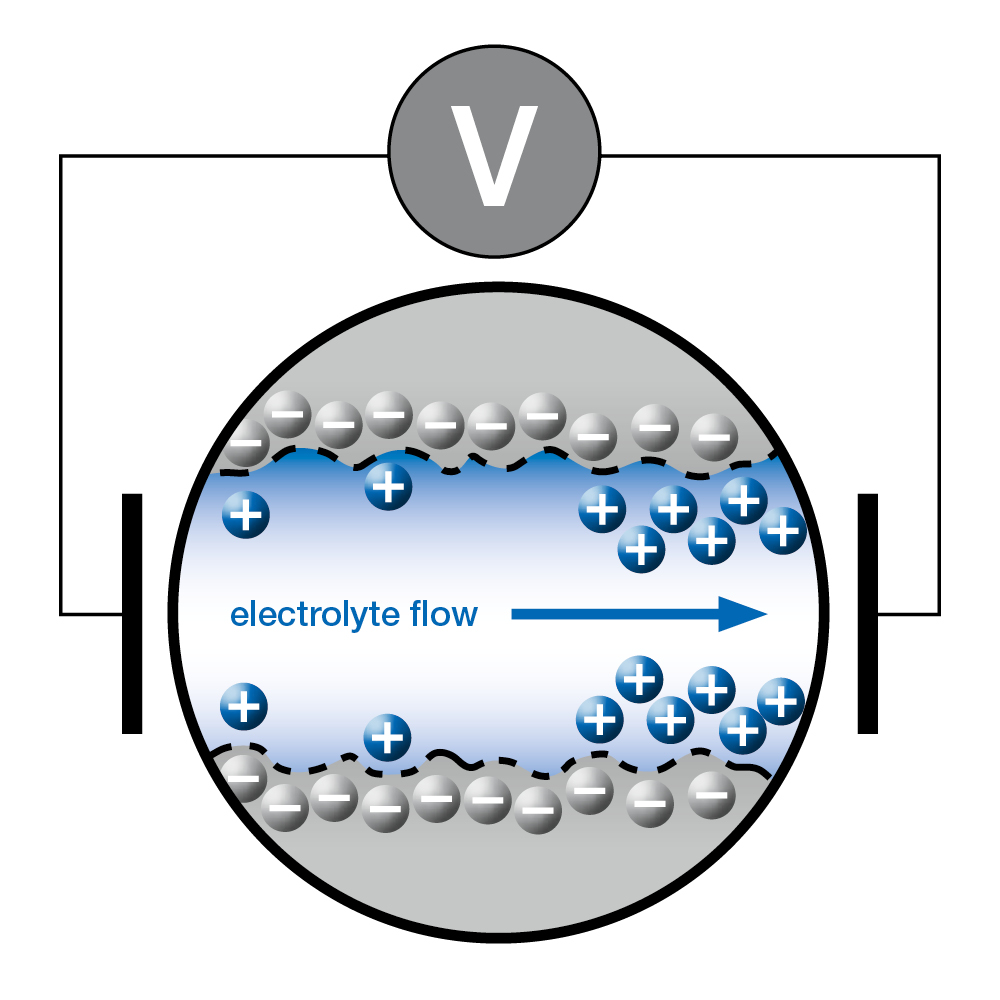
Zeta potential is a key indicator of colloid stability. The higher the magnitude of the zeta potential, the more stable the colloid. A lower-magnitude zeta potential indicates a less stable colloid; in other words, the colloidal particles will tend to aggregate or coagulate. Thus, knowledge of zeta potential is important for optimizing processes and for quality control.
Nonetheless, the measurement of zeta potential has previously been beset by significant limitations. Zeta potential measurements require an electric field to be applied to the sample. But electric fields can lead to sample heating and decomposition, so the electric fields must be kept as low as possible, and applied for as short a time as possible.
Until now, the state of the art in zeta-potential measurements was phase-analysis light scattering (PALS), which is based on electrophoretic light scattering (ELS) measurements.
PALS was an improvement over previous ELS measurements, because it no longer required the application of such large fields, so sample heating and decomposition was reduced. PALS measurements can be unreliable, however, especially with sensitive samples, where very short measuring times and low electric fields are required.
In an application report from Anton Paar, a newly patented technology called cmPALS is introduced. cmPALS (Continuously Monitored Phase-Analysis Light Scattering) results in dramatic enhancements in the sensitivity and stability of zeta-potential measurements. This technology is incorporated in the recently introduced particle-analyzing instrument, the Litesizer 500.
The report first describes some background information about the technical development of cmPALS and then presents a direct comparison of results from the cmPALS instrument with those from a PALS instrument.
To compare their performance, the zeta potential of a latex standard (0.05 per cent in 10 mM NaCl) was measured with both methods.
Click on the link to download the Application Report and to learn about the results its tests.










Water Sector Talent Exodus Could Cripple The Sector
Maybe if things are essential for the running of a country and we want to pay a fair price we should be running these utilities on a not for profit...